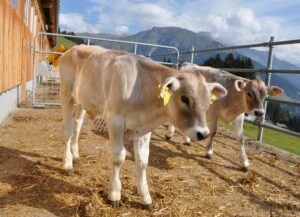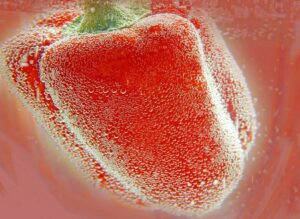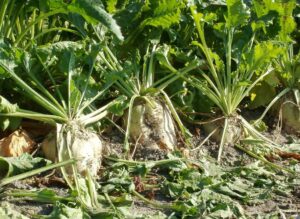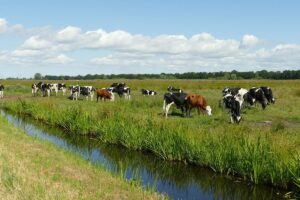Lucas Pantaleon
Mange is a skin disease caused by Chorioptes spp. which is a non-burrowing mite and it is the most common pathogen causing mange in cattle. The mite causes local inflammation and the characteristic crusty skin lesions located mainly at the head of the tail. Mange is common in herds housed indoors year-round, with a prevalence as high as 87.5%. Cows housed indoors have limited opportunities to groom the area most commonly affected by mange, hence hindering their ability to relieve itchiness. Mange causes inflammation of the skin and the release of histamine, which in turn activates nerve fibers inducing pruritus. Hence, it could be speculated that itching is correlated to the severity of the lesion and mite infestation.
Grooming behaviors helps animals maintain coat and skin in good condition by removing dirt and pathogens. It has been argued that cattle cope better with stress when are able to groom and that changes in grooming behavior could help identify health events. Mechanical brushes facilitate grooming behavior, and studies found that lactation cows increase grooming when these types of brushes are provided.
Canadian researchers designed a study with the objective to assess the motivation of dairy cows with mange to access a mechanical brush. Furthermore, investigators aimed to correlate accessibility to mechanical brush with the severity of mange clinical signs, before and after the application of anti-parasitic treatment. In order to assess motivation, researchers trained cows to open a weighted gate to access the mechanical brush.
Animals were divided into 4 groups of 12 cows in mid-lactation each. Cows had access to the mechanical brush by pushing a weighted gate. Response variables measured were: the number of times cows opened the gate and duration and frequency of brush use. Variables were recorded before treatment, day of treatment and post-treatment.
In this study investigators found that the severity of mange score had no effect on the outcome variables measured. One possibility for the lack of effect, could have been that motivation to groom is independent of lesion severity. Another possibility could be that the lesion score used in this study was not able to capture the relevant variation in skin lesion severity. After treatment was applied, motivation to use the brush decreased, likely due to fact that that mites might no longer be active and that lesions remained clear of pruritic stimulate.
Overall, the study results indicated that the use of a mechanical brush by cows affected by mange decreased after initial usage, possibly due to the elimination of the mite. Unrelatedly to the severity of mange, grooming with a mechanical brush is a valuable resource to dairy cows. More studies will be required to clearly uncover how motivation to access to a brush varies during the mange process.
Reference
Moncada, A.C., Neave, H.W., von Keyserlingk, M.A., Weary, D.M. 2020. Use of a mechanical brush by dairy cows with chorioptic mange. Applied Animal Behaviour Science. 223: 104925.
© 2020 Dairy Knowledge Center, LLC. All Rights Reserved.











